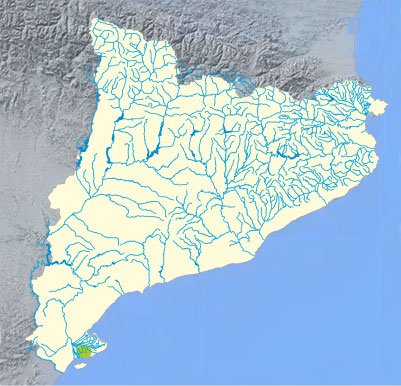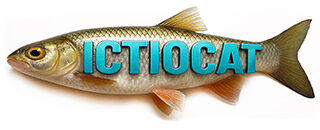Gambúsia
Gambusia holbrooki


La mida màxima de les femelles és d’uns 5 cm, una mica menys la dels mascles. El cap és ample i aplanat, amb uns ulls grans. La boca està en posició superior. El color del cos gris-verdós. Les aletes dorsal i caudal tenen punts negres. Les femelles madures tenen una taca negra a l’abdomen.
És una espècie originària de Nord-amèrica. Va ser introduïda a principis del segle XX i actualment està distribuïda per tot el territori català.
Habita en tota mena d’ambients, des d’aigües corrents fins a zones embassades, aiguamolls i llacunes litorals. Prefereix els ambients poc profunds, amb zones de vegetació. Té una certa resistència a la contaminació i a les temperatures elevades. La reproducció és vivípara, és a dir, els embrions es desenvolupen a l’interior de la femella. La dieta està composta per tota mena d’invertebrats.
És una espècie invasora extremadament perjudicial per a les espècies autòctones, en especial el fartet i el samaruc.
Distribució

Fúndul
Fundulus heteroclitus


És un peix que mesura menys de 10 cm. Un caràcter que el diferencia del fartet i del samaruc és que l’aleta dorsal s’origina per davant de l’anal. Els mascles són de color verdós, amb franges fosques als flancs i alguns punts blancs i blaus brillants. Les femelles són més pàl·lides, sense franges als costats.
El fúndul és d’origen nord-americà, i va ser detectat a Catalunya per primera vegada l’any 2005 al delta de l’Ebre, on actualment es troba en expansió.
És una espècie que s’adapta molt bé als canvis de salinitat dels estuaris i zones deltaiques. Viu en aigües poc fondes de maresmes, llacunes litorals, recs, etc. Ponen els ous sobre la vegetació aquàtica, principalment algues filamentoses. S’alimenta d’invertebrats i matèria vegetal.
El fúndul és una gran amenaça per al fartet, ja que pot colonitzar les àrees d’elevada salinitat on el fartet tenia els seus refugis principals enfront de la pressió de la gambúsia.
Distribució

